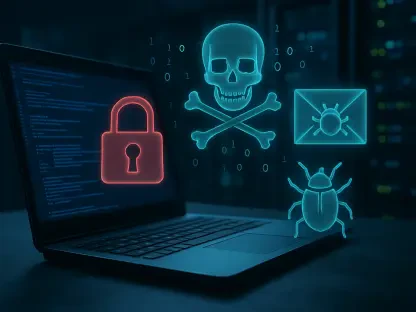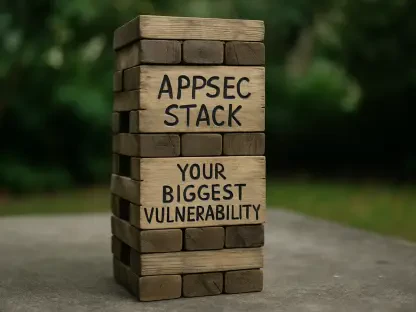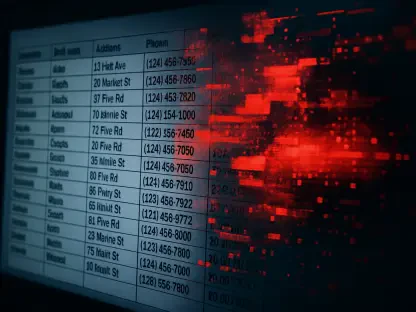In today’s rapidly evolving digital landscape, cybersecurity threats are becoming more sophisticated and harder to detect. Joining us is Rupert Marais, an expert who specializes in endpoint and device security, to shed light on recent cybersecurity threats impacting DevOps and cloud environments, particularly focusing on the surge in malware-laced npm packages.
Can you explain what malware-laced npm packages are and how they pose a threat to DevOps and cloud environments?
Malware-laced npm packages are essentially JavaScript libraries that have been maliciously altered to execute harmful code upon installation. These threats exploit the trust developers place in open-source libraries by hiding malicious code that can execute remote code, download additional payloads, or exfiltrate sensitive data. In DevOps and cloud environments, where automation and deployment pipelines significantly depend on these packages, such malware can cause widespread harm, compromising entire networks and cloud environments if not promptly identified and mitigated.
Could you share which specific npm packages were identified as being malware-laced and their download impact before removal?
The specific npm packages identified were “eslint-config-airbnb-compat,” “ts-runtime-compat-check,” “solders,” and “@mediawave/lib.” Together, they were downloaded thousands of times before their removal. For example, “eslint-config-airbnb-compat” alone was downloaded 676 times. Such downloads can integrate the malware into numerous pipelines, spreading the threat fast.
What made “eslint-config-airbnb-compat” unique concerning its dependency on “ts-runtime-compat-check”?
“eslint-config-airbnb-compat” was unique in that it used “ts-runtime-compat-check” as a dependency to contact an external server to retrieve and execute a malicious Base64-encoded string. This method of chaining dependencies to execute code showcases the danger of transitive dependencies, where seemingly benign libraries can introduce vulnerabilities.
How did the malware utilize transitive dependencies to execute its payloads, and why is this so dangerous?
By leveraging transitive dependencies, malware can execute its payload in an indirect manner, obscuring the source of the malicious activity. This method hides the code deeper in package hierarchies, making them harder to detect and remove. As each update or installation pulls in all dependencies, the threat can propagate widely and quickly without direct visibility, posing significant risks for remote code execution attacks.
Could you describe the obfuscation techniques used in the “solders” package and its impact on malware detection?
The “solders” package used a particularly deceptive technique by applying Unicode characters as variable names and creating a dynamic chain of code generation. This method made it appear as randomized symbols, complicating detection through standard scanning tools and requiring much deeper analysis to uncover the malicious code hiding beneath.
What role does Unicode obfuscation play in concealing malicious code in JavaScript?
Unicode obfuscation obscures code by making it appear as nonsensical text, which standard code parsers usually miss. By using characters not typically employed in regular coding, malware authors can drastically lower the chances of initial detection, allowing malicious scripts to circumvent basic security checks until executable payloads are reached.
How did the malware determine if a machine was running Windows, and what steps did it take afterward to avoid detection?
The malware checked if a compromised machine was running Windows by running a command via PowerShell, and if so, it fetched additional payloads from remote servers. This included modifying Windows Defender settings to exclude its malicious operations from detection, thereby evading immediate antivirus defenses.
Could you elaborate on the process and purpose of retrieving a Windows batch script in this malware attack?
After determining the operating system, the malware retrieved a Windows batch script targeting the system’s defenses. The primary goal was to configure the affected machine’s settings to prevent detection and patch pathways for the continued operation of malicious payloads, effectively paving the way for further exploitation.
How does Pulsar RAT differ from typical RAT malware, and what complexity was involved in its delivery?
Pulsar RAT is a variant of Quasar RAT, engineered to bypass defenses through successive layers of obfuscation. Its delivery entailed nesting a threat multiple layers deep inside a PNG file using obscure JavaScript, and altering diverse system settings – showcasing sophisticated techniques to prevent detection throughout the process.
What types of threats are mainly targeting the cryptocurrency and blockchain development ecosystem?
The main threats include credential stealers, cryptocurrency drainers, cryptojackers, and clippers. These malware types are designed to intercept and redirect financial transactions, steal private credentials, and utilize system resources for unauthorized cryptocurrency mining, capitalizing on blockchain’s growing integration into technology stacks.
Could you give examples of packages that were involved in harvesting browser credentials and cryptocurrency wallet keys?
Packages like “express-dompurify” and “pumptoolforvolumeandcomment” were involved in credential harvesting operations, gathering browser credentials and targeting cryptocurrency wallet keys. Another example, “bs58js,” was used for draining cryptographic assets and laundering funds via multi-hop transfers to obscure their origin, increasing complexity in tracing back.
What is slopsquatting, and how could AI-assisted coding lead to such attacks?
Slopsquatting involves exploiting typosquatting techniques alongside AI hallucinations – when AI models create plausible but non-existent package names. Developers, particularly those using AI-assisted tools, might inadvertently incorporate these falsified dependencies, which attackers exploit by pre-registering the names for malicious purposes.
How can advanced coding agents and workflows help reduce the risk of slopsquatting, even with present limitations?
Advanced agents, such as those using AI-based reasoning, can flag incorrect suggestions and alert developers before code implementation. These systems partially reduce slopsquatting risks by catching errors during the coding process. However, they are not foolproof and can miss unforeseen aberrations, indicating a persistent security gap.
What was the nature and purpose of the package “chimera-sandbox-extensions” found on PyPI?
The “chimera-sandbox-extensions” package was part of a controlled red teaming exercise and was not intended for malicious use outside of that environment. It simulated an attempt to collect documentation, credentials, and environment variables to test and enhance corporate cybersecurity detection capabilities.
How did the “chimera-sandbox-extensions” malware attempt to gather sensitive information from infected machines?
It connected to a domain to obtain an authentication token, which facilitated the download of further data-stealing payloads. These payloads collected sensitive information like Jamf configurations, AWS tokens, and general hardware data, specifically targeting systems linked to corporate or cloud infrastructure.
In the context of this specific malware, what types of data were targeted, and what systems were at risk?
The targeted data included enterprise credentials, AWS tokens, configuration settings, and platform information, primarily posing a threat to corporate cloud and infrastructure systems. The capability to extract JAMF receipts also highlights potential risks to Apple macOS systems within managed environments, emphasizing diverse cross-platform vulnerabilities.
How are red teaming exercises conducted to simulate and test company cybersecurity defenses?
Red teaming involves simulating cyber-attacks under controlled conditions to evaluate the effectiveness of a company’s security measures. These exercises aim to identify gaps, improve defensive strategies, and sharpen incident response protocols, ensuring organizations can effectively mitigate real-world threats and vulnerabilities.
What was Grab’s response to the identification of their chimera-sandbox-extensions package as a potential threat?
Grab clarified that the package was part of their cybersecurity exercise and wasn’t designed to target any systems outside their governance. Their exercise was planned and controlled to understand system weaknesses better and fortify their defensive strategies, dismissing any external malicious intents.
How does conducting regular security research and updates help defend against emerging threats in software development?
Continuous research and updates arm development teams with current threat intelligence, aid in the development of patches for vulnerabilities, and foster a culture of vigilance. Keeping abreast of emerging threats helps preemptively block security breaches, maintaining the integrity and safety of software environments.









